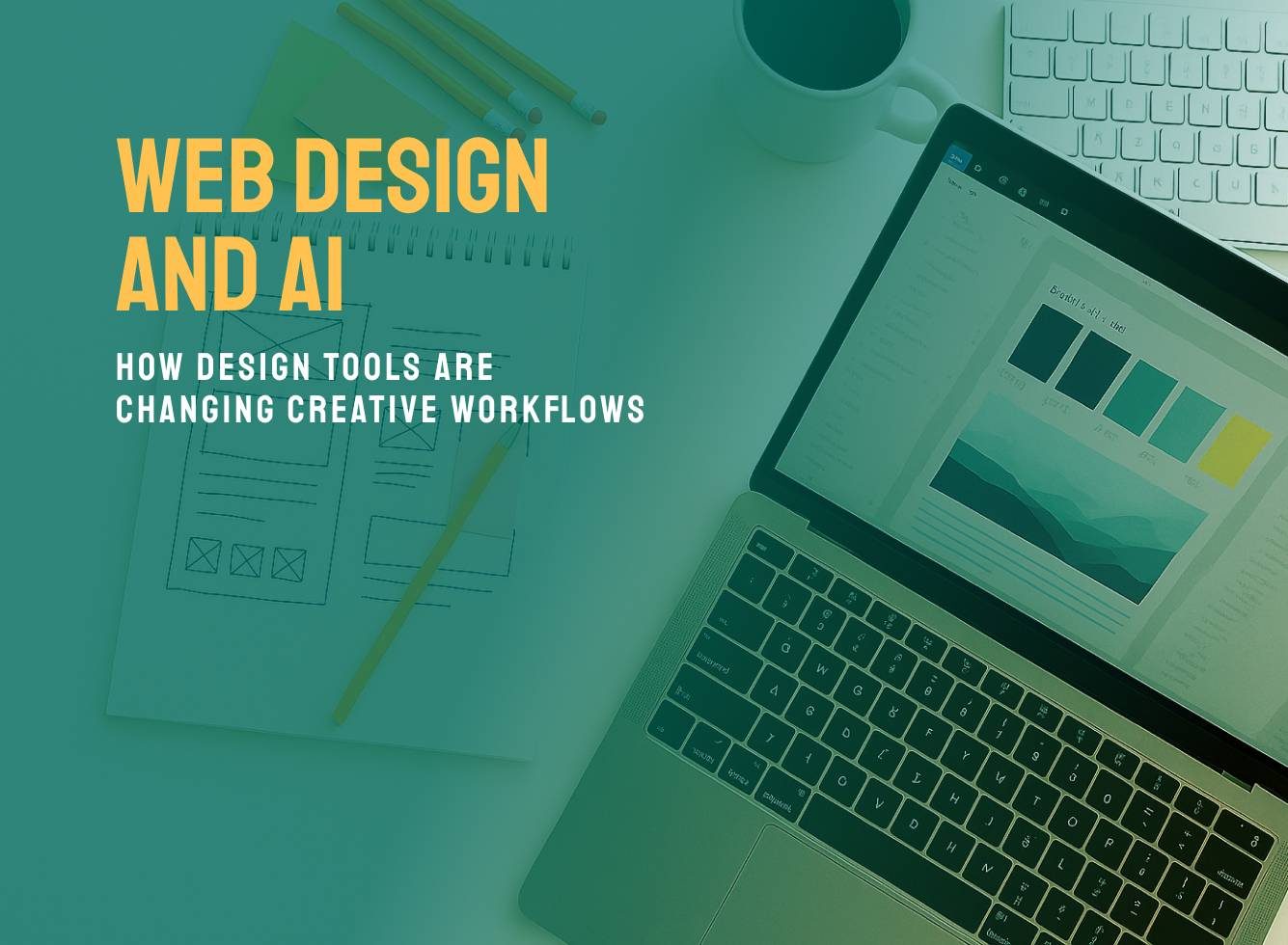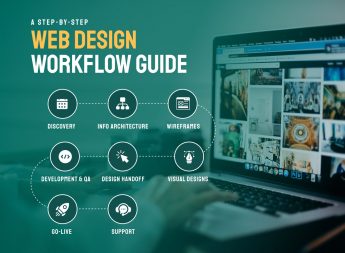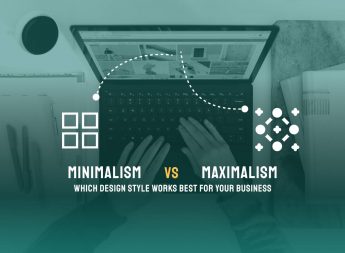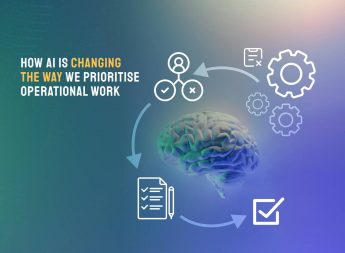Web Design and AI – How Design Tools are Changing Creative Workflows

The Rise of AI in Web Design Tools
In recent years, design platforms have rapidly adopted AI, bringing tasks that once required multiple tools or manual effort into a few clicks. Today, a web designer’s toolbox often includes:
- Figma AI – quick content generation, layout suggestions, and instant design adjustments.
- Adobe Firefly – generative image creation, vector variations, and intelligent object removal.
- Canva AI – automated template suggestions, brand kit adaptations, and text-to-image capabilities.
- Sketch with AI plug-ins – AI-assisted prototyping and icon generation.
- UXPin Merge + AI – combining AI-driven prototyping with real components for interactive designs.
The integration of AI into design platforms is part of a wider digital shift. As tools evolve, expectations for modern websites now include speed, scalability, and richer experiences – aligning with evolving trends in web design that show AI’s role in reshaping the industry.
Where AI Fits in the Creative Process
AI is best viewed as a supportive assistant – there to speed up exploration, reduce friction, and refine outputs. Here’s where it proves most useful:
1. Idea Exploration
AI can generate quick wireframes, layouts, or mood boards from simple text prompts. This allows designers to test multiple directions in minutes rather than hours. Tools like Figma AI can even suggest colour palettes or font pairings aligned with brand guidelines, making the early stages more dynamic and efficient.
2. Content Generation
Instead of searching endlessly for assets, designers can use AI to produce placeholder text, background visuals, or illustrative elements on demand. Adobe Firefly and Canva are strong players here, helping fill in creative gaps without slowing down momentum.
3. Repetitive Adjustments
Resizing, adapting layouts for multiple devices, or applying bulk style changes are jobs AI now automates effectively. By handling this design “housekeeping,” AI lets designers keep focus on the work that really moves projects forward.
4. Testing & Feedback
AI isn’t just about creation – it also supports evaluation. From simulating accessibility checks to predicting heatmaps of user attention, these tools give designers useful feedback early in the process, reducing costly errors later.
AI clearly adds value to the design process, yet its role is not without boundaries.
The Human Edge in Creative Design
AI enhances efficiency and exploration, but it works best alongside the human qualities that add depth and meaning. Web design goes beyond visuals – it connects strategy, emotion, and innovation to create experiences that truly resonate.
1. Brand Storytelling
AI can generate layouts and ideas, but human designers add the cultural understanding and narrative that define a brand. Blending AI’s speed with human insight turns websites into authentic reflections of a brand’s voice.
2. Strategic Problem-Solving
Design is closely tied to business outcomes. Humans define how a website supports customer journeys, search visibility, and conversion goals, while AI assists in translating these strategies into design variations and prototypes.
3. Innovation & Originality
AI offers inspiration by surfacing patterns and possibilities, but humans push creative boundaries by introducing new styles, breaking conventions, and reimagining what’s possible. Together, they spark innovation.
4. Ethical & Inclusive Design
While AI supports rapid production and exploration, aligning design with strategy and business objectives remains a distinctly human strength. Design decisions that influence customer journeys, brand perception, and growth require context and critical thinking, as highlighted in our blog on rethinking website design for modern business needs.
By combining AI’s efficiency with human creativity, workflows become not only faster but also richer, more strategic, and more meaningful.
The New Design Workflow - Humans + AI
Modern design workflows are becoming a partnership where AI and human creativity work side by side. AI brings speed and automation, while designers add strategy, originality, and emotional depth – together creating a process that is both efficient and meaningful.
A typical collaborative workflow might look like this:
- Research & Strategy – Human-led, drawing on market insights, user behaviour, and brand objectives.
- Rapid Exploration – AI-assisted, generating mood boards, layouts, and creative directions to accelerate early ideation.
- Concept Refinement – Human-led, shaping storytelling, visual identity, and design decisions that align with business goals.
- Production & Scaling – AI-assisted, handling repetitive tasks like resizing, responsive adaptations, and content generation.
- Testing & Review – Shared responsibility, with AI running automated checks and designers providing qualitative evaluation.
For teams refining their approach, combining AI’s speed with a clear roadmap delivers the best results. This ensures efficiency while keeping human creativity at the core. A detailed breakdown of this process is outlined in our step-by-step web design workflow guide. In practice, this partnership lets designers focus on strategy and storytelling, while AI drives efficiency – creating a workflow that blends the best of both worlds.
Benefits of Using AI in Web Design
AI in design is not just about speed – it expands what designers can achieve in less time. By managing repetitive tasks and early ideation, it frees designers to focus on strategy, creativity, and originality. The benefits include:
- Faster Iteration – Designers can experiment with more variations in less time, opening the door to creative directions that might not have been explored otherwise.
- Consistency – AI tools reinforce brand rules and visual standards, ensuring designs remain aligned across different platforms and formats.
- Accessibility – Automated checks for contrast, readability, and usability reduce the risk of overlooking details that affect user experience.
- Cost Efficiency – By reducing the hours spent on manual or repetitive work, project timelines become shorter and overall costs more manageable.
Striking the Right Balance
The real strength of AI in web design lies in balance: it speeds up tasks, ensures consistency, and improves efficiency, while designers provide the strategy, creativity, and human insight that give meaning to the work. When combined thoughtfully, this partnership allows teams to deliver faster, explore more possibilities, and still create designs that are authentic, inclusive, and aligned with business goals.
Humans and AI Shaping the Next Era of Web Design
AI is already transforming how websites are designed, but not by replacing human creativity. Instead, it acts as an intelligent assistant – accelerating ideation, reducing repetitive work, and opening new ways to test and scale.
The true value comes when AI’s efficiency is combined with the expertise of a web design agency London team that brings strategy, storytelling, and originality into the process. The future of web design is not AI or humans – it’s AI with humans. Those who adopt this partnership will define the next creative standard.



